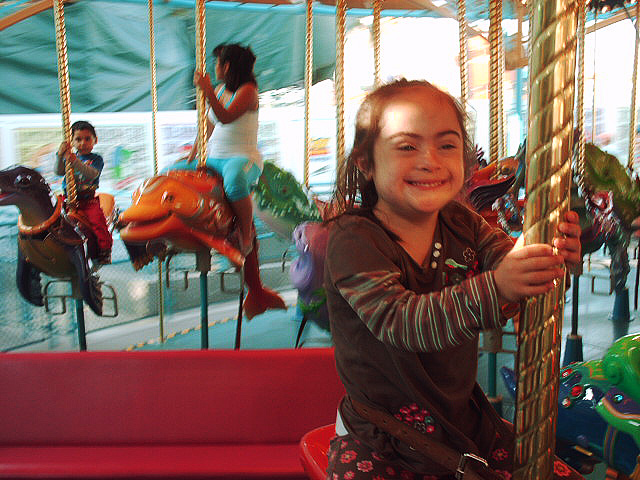Developmental/Therapeutic Intervention: Proactive or Reactive?
by Bob Doman
To be proactive is to anticipate, prepare, and intervene based on a long-term vision and perspective. When anticipating the future, you react accordingly before it actually happens.
To be reactive is to respond to a situation, rather than creating or controlling it.
 How does this relate to what we do with our children? What we do in the short term affects the long term; and that myopic/short-sighted intervention can have a negative impact on outcomes.
How does this relate to what we do with our children? What we do in the short term affects the long term; and that myopic/short-sighted intervention can have a negative impact on outcomes.
One contributing cause is lack of a vision, lack of hope, and a willingness to accept a short-term possible solution. Another underlying issue is that most teachers and therapists are not involved for the long term and are not aware of the long-term results or consequences of their interventions. The third contributing factor is a lack of awareness and knowledge of the whole child. When looking only at pieces, one cannot perceive, acknowledge, utilize, or evaluate the impact on the gestalt of the individual.
Armed with decades of experience working with tens of thousands of “Whole Children”, it is relatively easy for us at NACD to look at your children and to be proactive. Being proactive requires looking at a child’s strengths and talents. In addition we must look at weaknesses and issues, determine what pieces we need to put together or issues we need to resolve, in what order, and in what priority to produce a good ultimate outcome. One of the benefits of working with “Whole Children,” working with the full spectrum of children, and working with individuals (often for decades) is that we have the benefit of experience and perspective.
Working with “Whole Children”
I have spoken at length about the importance of working with “Whole Children.” Working with “Whole Children” simply means we are working with all aspects of the child from their health, sleep, sensory function, social function, behavior, speech, language, fine and gross motor function, cognition, and academic development to their attitude, self image, etc. I don’t know if it is possible to be truly proactive without working with the whole child. Most children have disconnected individuals addressing various aspects of their lives, coming and going; and the more issues a child has, generally the more people there are working reactively, not proactively, with them. Working “reactively” means they are reacting to what is perceived as an immediate issue or need, without an historic or long range, long-term vision.
In discussing all of the people who can be involved with your child, you are tempted to associate them all somehow, to call them a team or an army, suggesting that they are somehow a cohesive unit working together. The reality is that they are individuals working with pieces, more often than not in virtual isolation. Such individuals are often working reactively, not proactively. They are working with their one piece generally in virtual isolation and establishing their piece as their priority and generally from a perspective that they are only going to be involved for a relatively short period of time. Working with children for only a few months, or even years, does not permit one to gain a long-term perspective and to understand the implications of what is in reality short-term, reactive intervention.
Proactive Intervention
To help clarify what it means to be proactive, it is best to look at the antonyms or words that are essentially the opposite of proactive. Those words include such things as myopic or short-sighted or improvident. Another way to look at this is to say we are being reactive as opposed to proactive.
Reactive Intervention
If we are being reactive, we are reacting to problems; if we are being proactive we are looking forward, into the future, so as to prepare for the future. As parents with limited experience, it’s often difficult to be proactive. It’s difficult to be proactive if you have not had the experience and knowledge to know the degree to which what is happening today, or not happening today, is going to influence tomorrow, next week, next year, and the future. Sadly, many therapists and educators do not work with individuals over long periods, as in decades, to understand what issues can be created by working perhaps hard, but not working from a long-term, proactive perspective.
Some common examples of being reactive rather than proactive would include things like teaching young children with Down syndrome to sign. (link to Signing contra-indicated for DS) The perception is that Johnny isn’t talking and is frustrated, so let’s give him a means of communication that he can use soon–signing. Looking at the short-term results, which may be the child being able to communicate a few basic needs and being perhaps less frustrated, reinforces the use of signing. But if looked at long-term and proactively, we discover that we have had a negative impact on the child’s ultimate ability to communicate verbally, and even more significantly, have had a negative impact on the development of the child’s auditory processing, with resulting adverse affects on the child’s cognition and global maturity. Reactive intervention is not the best intervention.
One of the more glaring areas where we often see disastrous effects of reactive intervention is in the area of mobility and walking. We sometimes have children come to us who never developed the neurodevelopmental or the structural foundation that can ultimately produce a child who is a functional walker. Being proactive, we know that we have to follow a typical sequence of development, which among other things, requires the neurological, tactile, proprioceptive, and structure pieces of the child going through the necessary developmental stages before working on standing and walking. Children in walkers who had been “helped” to stand before they had the strength and structure to do it themselves, or do it properly, and then “assisted” to walk using various apparatuses to hold them up so they could move their legs, usually end up not being able to walk independently. Often they have created structural issues that even numerous surgical interventions cannot properly address. Children you see walking with walkers or braces and crutches almost always end up in wheelchairs. Yes, the goal is walking; but can we achieve it by circumventing the foundational pieces?
An example of a reactive approach in education is encouraging children to write before they neuro-developmentally are ready. Sixty or seventy years ago, it was not uncommon to make left-handed children in kindergarten and first grade, at five or six years of age, write with their right hands. This practice was stopped because interfering with the natural development of handedness resulted in a plethora of neurological and even emotional problems. Today this isn’t happening; but today we have preschool education, which is even creating more problems by making children write before they developmentally have even firmly established a dominant hand. A child may be leaning toward the right hand, for example, at three or four, and if encouraged to write with the right hand, establish a skill set for writing with the right hand. Ultimately such a child may turn out to be left-handed. Because the skill set for this specific function was established, the child will tend to continue to write with the right hand and is generally encouraged to continue to write with the right hand, resulting in all of the issues that were created 60 years ago, including poor handwriting.
The Reality of Education
The reality of education in general is that the very structure and organization of school as we generally know it almost defines reactive intervention. Education is generally perceived from the short-term perspective of needing to get specific curriculum material into a child’s brain, whether or not the material is targeted to the specific child’s present knowledge base, to their level of processing and understanding, let alone their interests. The net result of reactive education is very often poor outcomes, children often learning to dislike or “hate” school, which becomes synonymous with hating learning; and often because of the abnormal environment of narrow competition, leaving the system with a damaged self-image and lacking a perspective of who they are and what they can be. Proactively it’s not difficult to understand that at the foundation of education we should have the goal of teaching the child to love learning and to make them feel that they are smart and can learn. Is anyone shocked to hear that children do well learning things they love and struggle with what they hate? If the goal of education is to produce adults who are actually educated, who become not just lifelong readers, but life long learners with the confidence to pursue their hopes and dreams, then the system needs to be re-evaluated and made proactive not reactive.
Educational & Therapeutic Perceptions
There are numerous examples in educational and therapeutic intervention that demonstrate the negative aspects of reactive intervention. The problem is ubiquitous, and it doesn’t seem to be changing anytime soon. Proactive intervention implores us to look at the child from a long-term perspective and with a vision and a plan to produce better outcomes. If existing outcomes are perceived as actual reflections of an individual’s potential, there is no motivation for change.
Perception of potential is a reflection of one’s experience. I recall a colleague correcting me many decades ago when I referred to someone as having twenty years of experience. He told me that the reality was that they had a year of experience twenty times, not twenty years of experience. I have been extremely disappointed to see how incredibly slow change in traditional education and therapeutic intervention has been. But doing the same reactive things year after year and producing the same limited results has not stoked change, but has reinforced the perspective of limited potential, and has encouraged many educators and therapists to keep doing the same things, producing the same inevitable outcomes.
Proactive intervention is stimulated by a need to do things better and to improve outcomes, all of which is perpetuated by a vision of what can be and what should be.
Reprinted by permission of The NACD Foundation, Volume 32 No. 5, 2019 ©NACD






